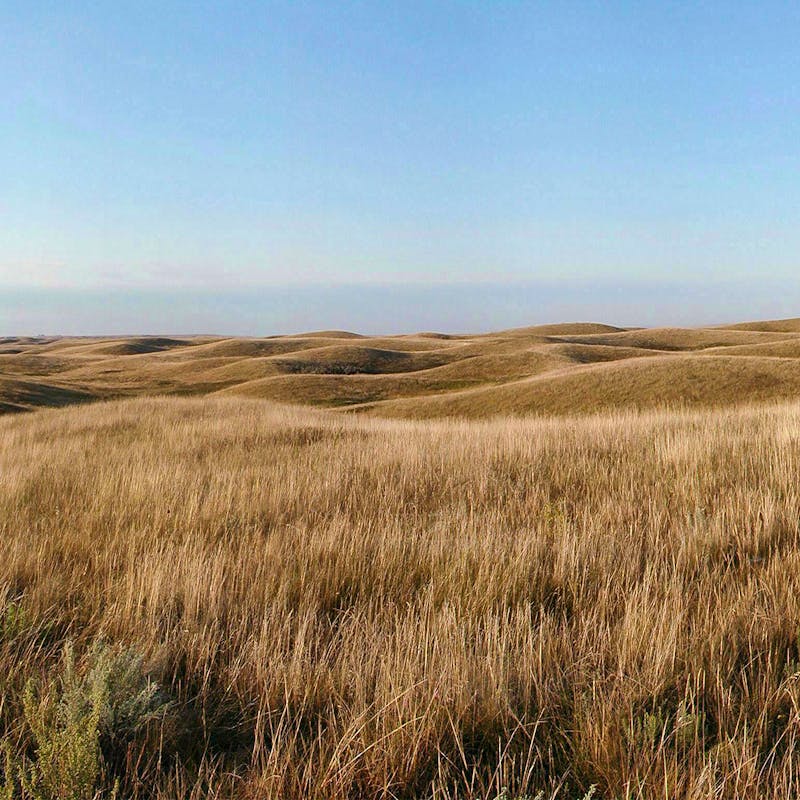"‘Hope’ is the thing with feathers –
That perches in the soul –
And sings the tune without the words –
And never stops – at all."~Emily Dickinson
The vast grasslands of the Great Plains support a unique assemblage of wildlife but the Plains’ amazing assembly of grassland birds are on borrowed time. Over the past 10 years, scientists have recorded a dramatic decline in grassland bird populations. The American Bird Conservancy recently reported a 53% reduction in their overall population, the greatest single bird decline in any single terrestrial biome.
Why? Habitat Loss.
Grassland birds rely on native grasslands yet fewer than 40% of the 550 million acres of historical area that once stretched from Canada to Mexico remain today. Land conversion to agriculture, oil and gas development, fire suppression and subsequent woody encroachment has compromised the health of short- and mixed-grass prairie over the past several decades.
While all grassland birds rely on intact grasslands for food and shelter, some species are also dependent on the unique habitat provided by prairie dogs, whose fate is also in jeopardy. The widespread destruction of prairie dogs across the Great Plains, coupled with the arrival of the non-native disease sylvatic plague in the 1900s, have reduced prairie dog populations by more than 95%.
In nature, as in life, everything is connected. Keen bird watchers know this when they visit our grasslands by going to prairie dog towns to try and find such a rare sighting of a mountain plover.
Mountain Plovers
Prairie dogs are key to the mountain plover’s long-term survival. These small mammals help aerate and fertilize the soil as they dig their underground towns, allowing a greater diversity of plants to thrive and thus grassland birds to flourish. The plants, in turn, provide nesting and cover for mountain plovers. Density surveys recently completed on the Thunder Basin National Grassland in Wyoming — where Defenders has long worked to protect prairie dog colonies — showed mountain plovers also tend to nest on the edges of prairie dog towns.
Mountain plovers additionally benefit from the vegetation prairie dogs clip near their burrows to see predators. The birds use the tall grasses surrounding the colony to hide. In fact, these birds are often called the “Prairie Ghost” because their pale brown plumage helps them “vanish” into the native grass while standing still.
Unfortunately, mountain plover populations have declined by 71% since 1970. The species has been proposed for protection under the Endangered Species Act multiple times but remains unlisted today.
Lark Bunting
Another species associated with prairie dog towns is the lark bunting. This songbird is a member of the sparrow family. Males are identified by their black-and-white plumage and they breed in grassland and shrub steppe habitat. Bird watchers will get a treat watching their elaborate displays while in flight. Males court females by launching themselves 20 to 30 feet into the air, then drift back down on outstretched wings, singing a “flight song” of whistles and trills.
Lark bunting populations vary across the Great Plains, but overall populations have dropped by 72% since 1970 due to habitat loss. This bird has also been hit hard by the dramatic decline of their primary prey of grassland insects, including grasshoppers, which are impacted by pesticides.
Sprague’s Pipit
Similar to the mountain plover, Sprague’s pipit can be hard to spot because their pale brown plumage blends in well with grasses. This species breeds in mixed-grass prairie and, like the Lark bunting, their decline — 74% since 1907 — is also attributed to habitat loss.
Brown-headed Cowbird
While all these songbirds tend to flock together, one species is not so well liked. The brown-headed cowbird is a small black bird standing at 6 to 8 inches tall. They are native to the plains and are a relatively common site.
They are named after the bird’s habit of riding on a cow’s back, catching and eating insects. They are also sometimes called a bison bird because they used to follow bison herds across the Great Plains before European colonization and will ride and eat insects off bison’s backs.
What is not so appreciated, at least by the birds, is this blackbird lays its eggs in the nests of host species, letting unsuspecting parents raise its young, a breeding strategy known as brood parasitism.
Western Meadowlark
One bird species you may hear before you see it on the plains is the Western meadowlark. Its call is like a flute playing along with the prairie breeze. You will likely see the bird, with its bright yellow chest and spotted black and white wings, sitting on a fence post or foraging in open grasslands. In winter, they can be seen in mixed flocks with other songbirds and starlings.
All these birds tend to flock together. Our hope, like the poem by Emily Dickinson, is for all our grassland birds to thrive, sing and live in harmony with nature amid our grasslands for all time.











